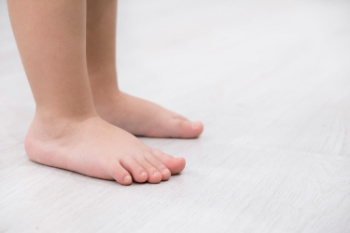

Preventing running injuries is important for runners of all levels, and incorporating preventive measures into your routine can make a significant difference. Start by investing in proper running shoes that offer adequate support, cushioning, and stability for your foot type and gait. Additionally, prioritize ankle mobility through exercises such as ankle circles, calf stretches, and heel lifts to maintain flexibility and range of motion. Strengthening exercises for the feet, toes, and ankles, such as toe scrunches, calf raises, and resistance band exercises, can help improve stability and reduce the risk of strains and sprains. Incorporating dynamic warm-up routines before running sessions and static stretches afterward can also promote muscle elasticity and prevent tightness. It is beneficial to listen to your body and avoid overtraining, gradually increasing mileage and intensity to allow for proper adaptation and recovery. If you have incurred a foot or ankle injury while running, it is suggested that you visit a podiatrist who can offer effective treatment solutions, and guide you on additional running prevention methods.
All runners should take extra precaution when trying to avoid injury. If you have any concerns about your feet, contact one of our podiatrists of Grand Blanc Family Footcare. Our doctors will treat your foot and ankle needs.
How to Prevent Running Injuries
There are a lot of mistakes a runner can make prior to a workout that can induce injury. A lot of athletes tend to overstretch before running, instead of saving those workouts for a post-run routine. Deep lunges and hand-to-toe hamstring pulls should be performed after a workout instead of during a warmup. Another common mistake is jumping into an intense routine before your body is physically prepared for it. You should try to ease your way into long-distance running instead of forcing yourself to rush into it.
More Tips for Preventing Injury
If you have any questions, please feel free to contact our office located in Grand Blanc, MI . We offer the newest diagnostic and treatment technologies for all your foot care needs.

Flat feet, also known as fallen arches, are a common condition where the arches of the feet touch the ground when standing. While it is normal for babies and toddlers to have flat feet due to underdeveloped arches, most children develop arches by the age of six. However, some children continue to have flat feet into adolescence and adulthood. In many cases, flat feet do not cause any problems or require treatment, although some children may experience foot pain, stiffness, or difficulty with activities like running or sports. It is important for parents to monitor their child's foot development and seek medical attention if they have concerns about flat feet. A podiatrist can assess the child's feet and recommend appropriate interventions, such as wearing supportive footwear or custom orthotic inserts. By understanding flat feet and seeking timely intervention when needed, parents can help ensure their child's foot health and overall well-being. If your child has maintained flat feet beyond the age of six, it is strongly suggested that you confer with a podiatrist who can monitor your child’s condition.
Flatfoot is a condition many people suffer from. If you have flat feet, contact one of our podiatrists from Grand Blanc Family Footcare. Our doctors will treat your foot and ankle needs.
What Are Flat Feet?
Flatfoot is a condition in which the arch of the foot is depressed and the sole of the foot is almost completely in contact with the ground. About 20-30% of the population generally has flat feet because their arches never formed during growth.
Conditions & Problems:
Having flat feet makes it difficult to run or walk because of the stress placed on the ankles.
Alignment – The general alignment of your legs can be disrupted, because the ankles move inward which can cause major discomfort.
Knees – If you have complications with your knees, flat feet can be a contributor to arthritis in that area.
Symptoms
Treatment
If you are experiencing pain and stress on the foot you may weaken the posterior tibial tendon, which runs around the inside of the ankle.
If you have any questions please feel free to contact our office located in Grand Blanc, MI . We offer the newest diagnostic and treatment technologies for all your foot and ankle needs.

Foot and ankle injuries are prevalent in the high-impact world of the NFL, affecting players of all positions. One common cause is the rigorous physical demands of the sport, including sudden changes in direction, high-speed collisions, and repetitive stress on the lower extremities. Sprains, strains, fractures, and tendonitis are among the most frequently encountered injuries. Symptoms vary depending on the severity and type of injury but often include pain, swelling, bruising, instability, and limited range of motion. Plantar fasciitis, Achilles tendon injuries, turf toe, and Lisfranc injuries are particularly notorious in the NFL due to the stress placed on the foot and ankle during gameplay. Additionally, inadequate rehabilitation and premature return to play can exacerbate these injuries, prolonging recovery times and increasing the risk of re-injury. If you enjoy playing football and have sustained a foot or ankle injury, it is suggested that you visit a podiatrist who can offer you a tailored treatment plan and effective preventative techniques.
Sports related foot and ankle injuries require proper treatment before players can go back to their regular routines. For more information, contact one of our podiatrists of Grand Blanc Family Footcare. Our doctors can provide the care you need to keep you pain-free and on your feet.
Sports Related Foot and Ankle Injuries
Foot and ankle injuries are a common occurrence when it comes to athletes of any sport. While many athletes dismiss the initial aches and pains, the truth is that ignoring potential foot and ankle injuries can lead to serious problems. As athletes continue to place pressure and strain the area further, a mild injury can turn into something as serious as a rupture and may lead to a permanent disability. There are many factors that contribute to sports related foot and ankle injuries, which include failure to warm up properly, not providing support or wearing bad footwear. Common injuries and conditions athletes face, including:
Sports related injuries are commonly treated using the RICE method. This includes rest, applying ice to the injured area, compression and elevating the ankle. More serious sprains and injuries may require surgery, which could include arthroscopic and reconstructive surgery. Rehabilitation and therapy may also be required in order to get any recovering athlete to become fully functional again. Any unusual aches and pains an athlete sustains must be evaluated by a licensed, reputable medical professional.
If you have any questions please feel free to contact our office located in Grand Blanc, MI . We offer the newest diagnostic and treatment technologies for all your foot and ankle needs.

Morton's neuroma, a painful condition characterized by thickening of the tissue around a nerve leading to the toes, can significantly impact mobility and quality of life. When conservative treatments fail to provide adequate relief, surgical intervention becomes a viable option. The surgical approach aims to decompress the affected nerve and remove the enlarged tissue causing compression and discomfort. Typically performed under local anesthesia, surgical techniques vary depending on the severity of the neuroma and individual patient factors. Common procedures include neurectomy, wherein the affected nerve segment is excised, or decompression, which involves releasing pressure on the nerve through various means. Minimally invasive techniques, such as endoscopic decompression, offer reduced recovery times and fewer complications compared to traditional open surgery. While surgery for Morton's neuroma carries risks like any other procedure, it can offer significant relief from persistent pain and allow individuals to regain mobility and resume daily activities with greater comfort and ease. If you have Morton’s neuroma and are considering surgery for relief, it is suggested that you consult a podiatrist who can determine if this is the right choice for you.
Foot surgery is sometimes necessary to treat a foot ailment. To learn more, contact one of our podiatrists of Grand Blanc Family Footcare. Our doctors will assist you with all of your foot and ankle needs.
When Is Surgery Necessary?
Foot and ankle surgery is generally reserved for cases in which less invasive, conservative procedures have failed to alleviate the problem. Some of the cases in which surgery may be necessary include:
What Types of Surgery Are There?
The type of surgery you receive will depend on the nature of the problem you have. Some of the possible surgeries include:
Benefits of Surgery
Although surgery is usually a last resort, it can provide more complete pain relief compared to non-surgical methods and may allow you to finally resume full activity.
Surgical techniques have also become increasingly sophisticated. Techniques like endoscopic surgery allow for smaller incisions and faster recovery times.
If you have any questions please feel free to contact our office located in Grand Blanc, MI . We offer the newest diagnostic and treatment technologies for all your foot and ankle needs.

When it comes to foot health, circulation plays an important role. Poor circulation can lead to discomfort, swelling, and severe complications. However, there is a natural solution that often gets overlooked, which is vitamins. Incorporating essential vitamins into your diet can significantly improve foot circulation and overall vascular health. Vitamin E, known for its antioxidant properties, aids in widening blood vessels and promoting efficient blood flow to the extremities, including the feet. Similarly, vitamin C supports collagen production, strengthening blood vessel walls and enhancing circulation. Additionally, vitamin B3, or niacin, has vasodilating effects, meaning it helps widen blood vessels, thus improving blood flow. Additionally, omega-3 fatty acids, while not vitamins per se, are essential for cardiovascular health. Found in abundance in fish oil and certain seeds, omega-3s can reduce inflammation and enhance blood circulation throughout the body, including the feet. By incorporating these essential nutrients into your diet through whole foods or supplements, you can effectively improve foot circulation, ensuring optimal foot health and comfort for years to come. If you have poor foot circulation and are seeking relief techniques, it is suggested that you consult a podiatrist who can discuss how vitamins can play a role in treatment.
Poor circulation is a serious condition and needs immediate medical attention. If you have any concerns with poor circulation in your feet contact one of our podiatrists of Grand Blanc Family Footcare. Our doctors will treat your foot and ankle needs.
Poor Circulation in the Feet
Poor blood circulation in the feet and legs is can be caused by peripheral artery disease (PAD), which is the result of a buildup of plaque in the arteries.
Plaque buildup or atherosclerosis results from excess calcium and cholesterol in the bloodstream. This can restrict the amount of blood which can flow through the arteries. Poor blood circulation in the feet and legs are sometimes caused by inflammation in the blood vessels, known as vasculitis.
Causes
Lack of oxygen and oxygen from poor blood circulation restricts muscle growth and development. It can also cause:
Those who have diabetes or smoke are at greatest risk for poor circulation, as are those who are over 50. If you have poor circulation in the feet and legs it may be caused by PAD and is important to make changes to your lifestyle in order to reduce risk of getting a heart attack or stroke. Exercise and maintaining a healthy lifestyle will dramatically improve conditions.
As always, see a podiatrist as he or she will assist in finding a regimen that suits you. A podiatrist can also prescribe you any needed medication.
If you have any questions please feel free to contact our office located in Grand Blanc, MI . We offer the newest diagnostic and treatment technologies for all your foot and ankle needs.